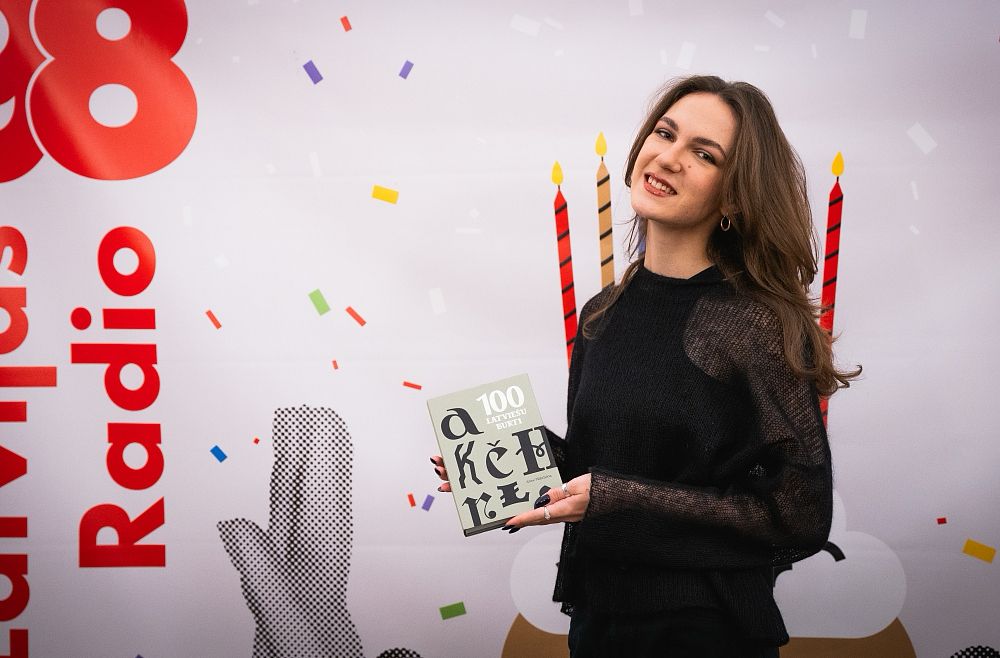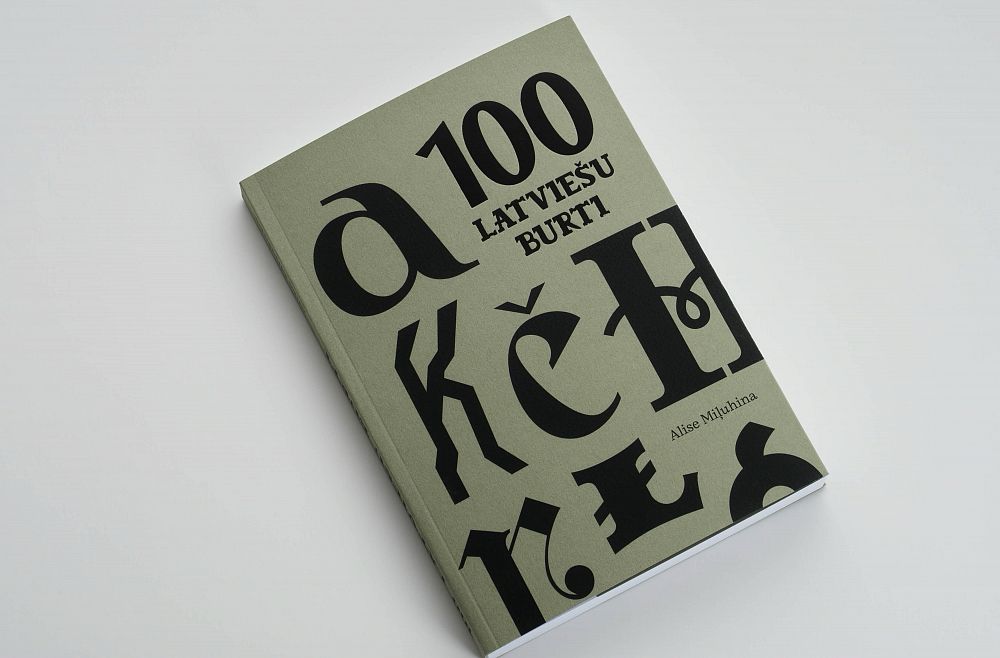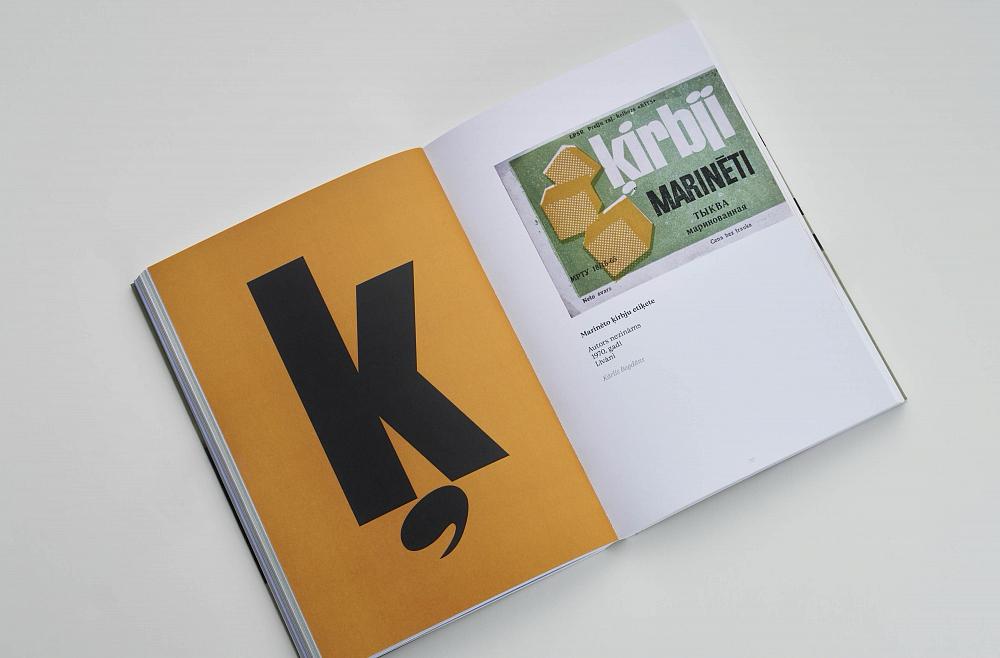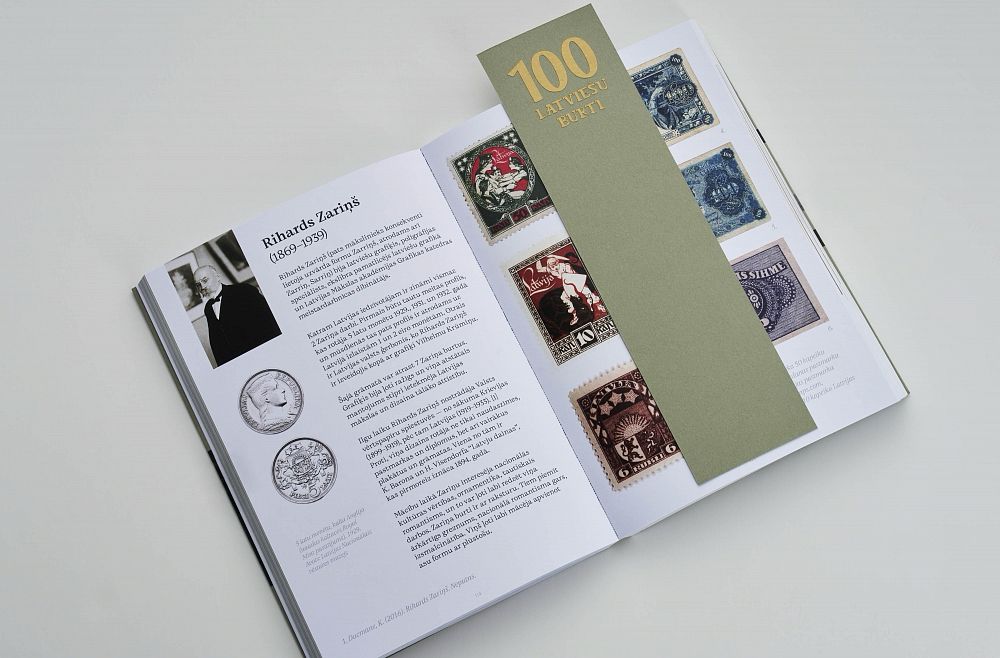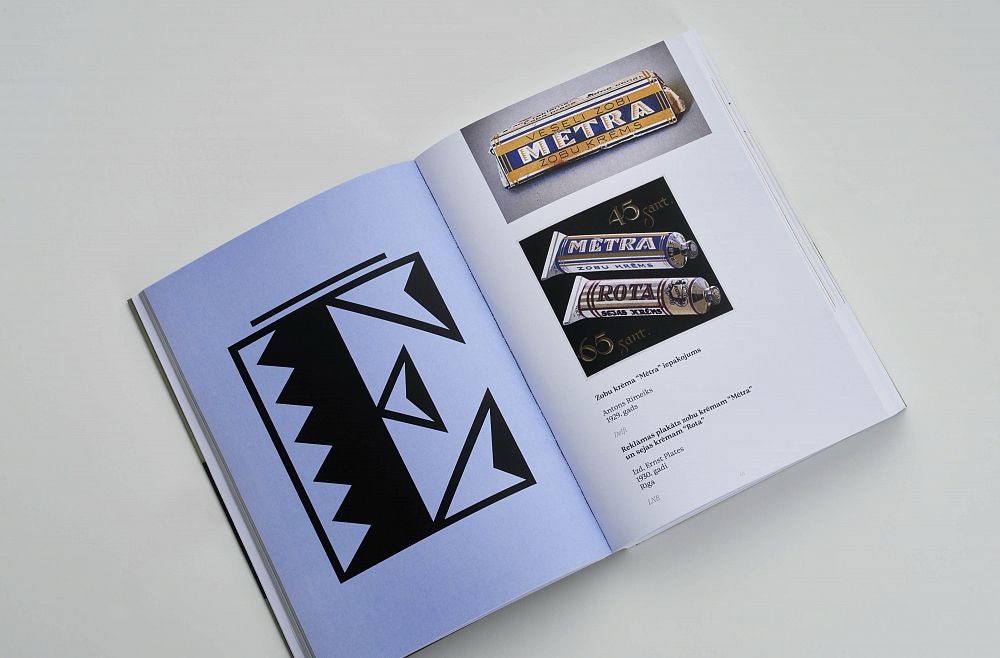"Letters are an important tool of communication used every day. Behind every letter there is a story of its formation. Letters are carriers of the cultural code, they change with the society and the political situation, they follow the novelties of culture and technology," the author of the book Alise Stefānija Miļuhina states in the foreword.
“I wanted to tell everyone who the people behind the canonical works were, who created a national identity in this field of [graphic design],” says Miļuhina.
The book “100 Latvian letters” serves as a reference tool, provides an insight into the history of Latvian art of letters, as well as a compilation of the author's personal notes while working on this research. The work compiles 100 letter samples from different decades, from 1890 to 1970. The artist explains that “100 Latvian letters” is intended as a cognitive tool not only for graphic designers but for everyone interested in it. The letters in the book come from various sources, including newspapers, books, food packaging, tickets, etc.
“Typography is the art of letters, the design, the structure of them, also how to put those letters together and create a system to make them look neat, readable,” explains the designer. Alise was encouraged to focus on the Latvian letters by the fact that very little information is available about them and the history of Latvian design.
“When you learn the history of graphic design, you often turn to works by foreign authors, from northern countries, but there is very little talk about Latvia and I would like us as designers from Latvia to be proud to say that we also learn and have a design history,” Miļuhina said.
“I'm not a linguist, I'm not a language historian. Latvian is not my mother tongue, but it is very interesting to study all this and look at the language with the eyes of a designer,“ the artist said.
In the book, the letters are arranged alphabetically and chronologically, including works from Jūlijs Madernieks, Ansis Cīrulis, Rihards Zariņš, Niklāvs Strunke, Alfrēds Švedrēvics, and Indriķis Zeberiņš.
